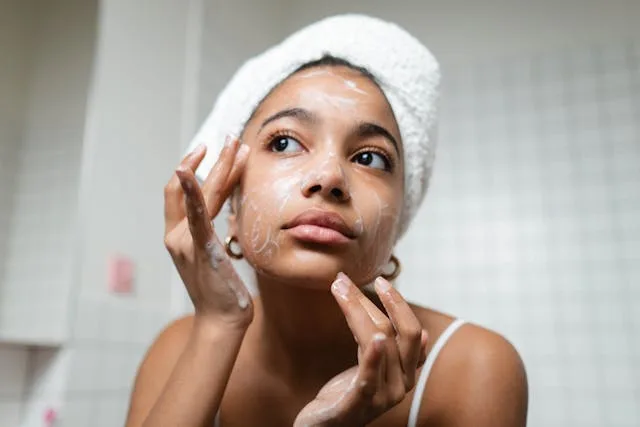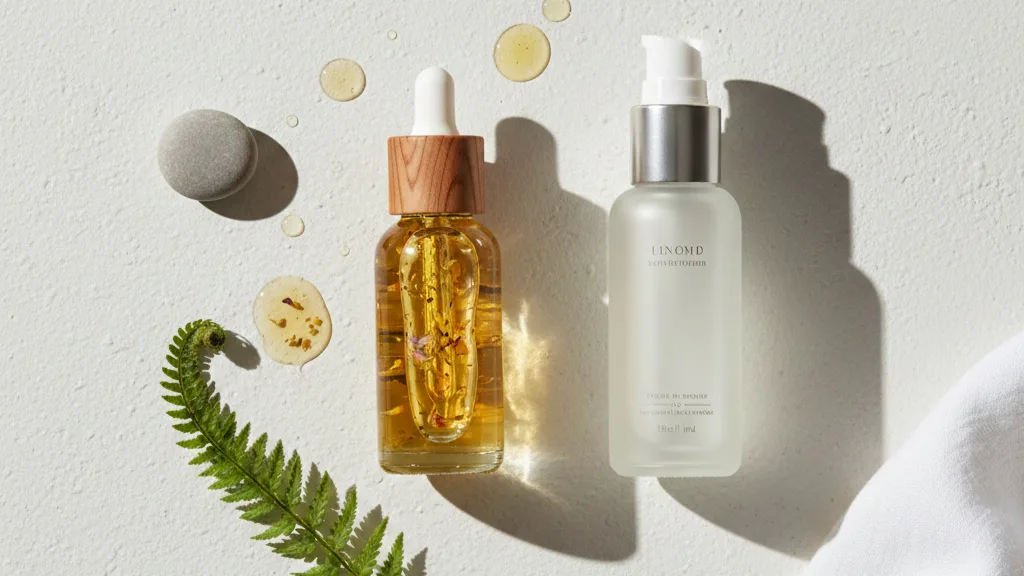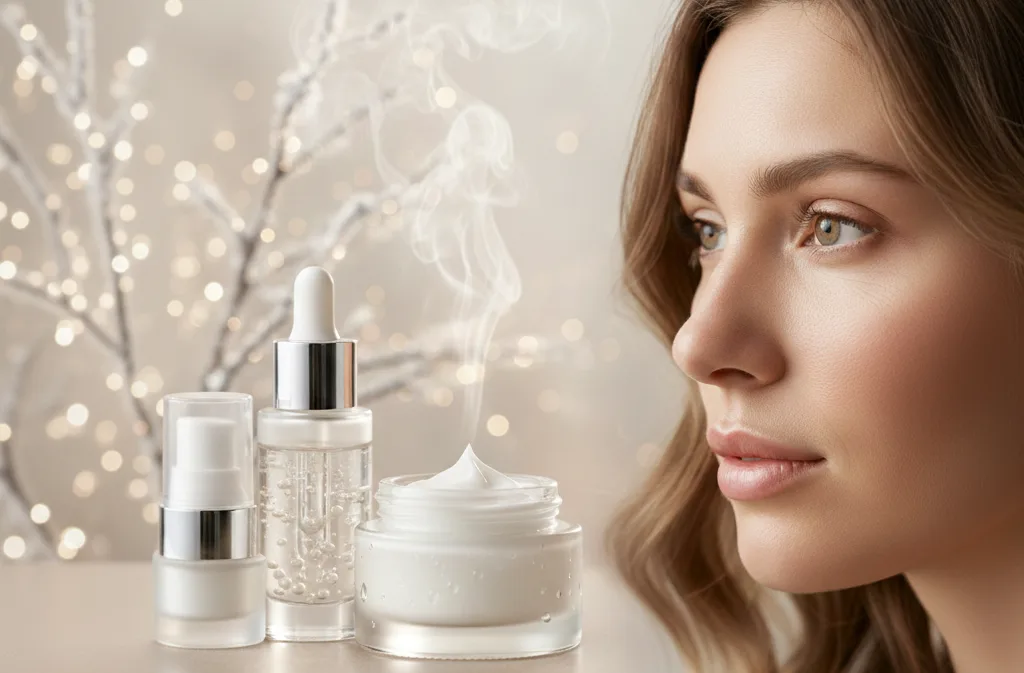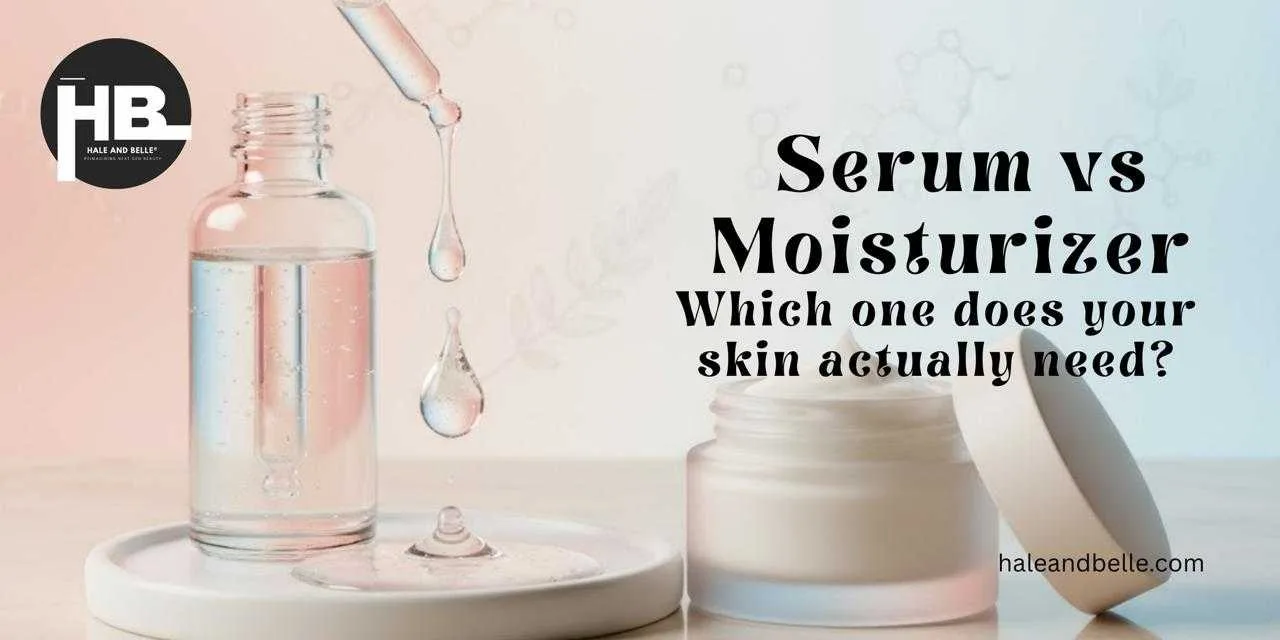Creating a skincare routine tailored to your skin’s unique needs can feel overwhelming, especially with the vast array of products available. However, a custom skincare guide helps you design a regimen that aligns with your skin type, concerns, and goals. This step-by-step approach acts as a skincare routine builder, helping you achieve optimal results.
In this Article
- Step 1: Determine Your Skin Type
- Step 2: Identify Your Skin Concerns
- Step 3: Create Your Personalized Skincare Routine
- Step 4: Choose the Right Ingredients
- Step 5: Enhance Your Routine with Advanced Skincare
- Step 6: Avoid Harmful Ingredient Combinations
- Step 7: Consider Lifestyle Factors for Healthier Skin
- Step 8: Maintain Consistency and Adapt as Needed
- Step 9: Consult a Dermatologist for Expert Advice
- FAQs: Custom Skincare Guide for Your Routine
Step 1: Determine Your Skin Type
Before choosing products, identify your skin type:
- Oily Skin: Produces excess oil, leading to shine and potential breakouts.
- Dry Skin: Lacks hydration, often feeling tight or flaky.
- Combination Skin: Features both oily and dry areas, typically an oily T-zone with drier cheeks.
- Sensitive Skin: Easily irritated, often experiencing redness and adverse reactions to specific ingredients.
- Normal Skin: Well-balanced with minimal skin concerns.
Identifying your skin type is foundational. According to a study published in BMC Biology, the use of personal care products can significantly impact the skin’s molecular and microbial diversity, underscoring the importance of tailored skincare routines [1].
Step 2: Identify Your Skin Concerns
A custom skincare guide should focus on addressing your primary skin concerns, including:
- Acne and breakouts
- Hyperpigmentation and dark spots
- Fine lines and wrinkles
- Dullness and uneven skin tone
- Dehydration or excessive oiliness
Step 3: Create Your Personalized Skincare Routine
A well-structured skincare routine builder includes the following essential steps:
Morning Routine
- Cleanser – Gently removes overnight buildup and refreshes the skin.
- Toner – Balances skin and enhances product absorption.
- Serum – Targets concerns such as brightness, hydration, or oil control.
- Moisturizer – Locks in moisture and maintains hydration.
- Sunscreen (SPF 30+) – Shields the skin from UV damage and premature aging.
Evening Routine
- Double Cleanse – An oil-based cleanser followed by a water-based one to remove dirt and makeup.
- Exfoliation (2-3 times a week) – Helps remove dead skin cells and unclog pores.
- Treatment (Retinol, Peptides, or Spot Treatments) – Addresses specific concerns.
- Moisturizer or Night Cream – Supports overnight skin repair and nourishment.
Step 4: Choose the Right Ingredients
A custom skincare guide highlights essential ingredients that benefit different skin types:
- Hyaluronic Acid – Boosts hydration and plumps the skin.
- Salicylic Acid – Clears clogged pores and fights acne.
- Niacinamide – Controls oil and reduces redness.
- Vitamin C – Brightens and evens out skin tone.
- Peptides – Boost collagen production, enhancing skin firmness.
- Retinol – Enhances cell renewal and smooths fine lines.
- Ceramides – Reinforce the skin barrier and lock in moisture.
A comprehensive review in the Journal of the American Academy of Dermatology highlights the benefits of these ingredients in promoting skin health [2].
Related Reads:
- Mandelic Acid vs Salicylic Acid: Which One Should You Choose for Your Skin?
- Ravinage vs. Retinol: Which Skincare Ingredient Suits You Best?
- Ceramides in K-Beauty: Why These Ingredients Are a Staple in Korean Skincare
Step 5: Enhance Your Routine with Advanced Skincare
For additional benefits, consider these extra steps:
- Face Oils – Provide deep nourishment and seal in hydration.
- Sheet Masks – Deliver concentrated doses of hydration and active ingredients.
- Professional Treatments – Chemical peels or laser therapies for targeted skin concerns.
Step 6: Avoid Harmful Ingredient Combinations
Some ingredients don’t pair well together and may cause irritation:
- Retinol + AHAs/BHAs – Can lead to excessive dryness and irritation.
- Vitamin C + Niacinamide – May reduce effectiveness if not formulated correctly.
- Benzoyl Peroxide + Retinol – Can cause severe dryness and sensitivity.
- Salicylic Acid + Glycolic Acid – Over-exfoliation can weaken the skin barrier.
- Hydroquinone + Peroxide – Can cause severe skin reactions and irritation.
Research published in the Environmental Science and Pollution Research journal discusses the potential harmful effects of certain cosmetic ingredient combinations [3].
Step 7: Consider Lifestyle Factors for Healthier Skin
A custom skincare guide extends beyond products. Your daily habits significantly impact your skin’s health:
- Balanced Diet – Eating antioxidant-rich foods supports healthy skin.
- Proper Hydration – Drinking enough water helps maintain a radiant complexion.
- Quality Sleep – Sufficient rest allows the skin to repair and regenerate.
- Stress Management – Reducing stress can help prevent breakouts and inflammation.
An article in the MDPI Cosmetics journal elaborates on how healthy lifestyle factors enhance skin anti-aging [4].
Step 8: Maintain Consistency and Adapt as Needed
Consistency is key. Stick to your routine for at least 4-6 weeks before assessing results. Modify your skincare routine builder as needed based on seasonal changes, age, or evolving concerns.
Step 9: Consult a Dermatologist for Expert Advice
For persistent skin concerns, seeking professional guidance can enhance your custom skincare guide. A dermatologist can recommend treatments tailored to your specific needs.
Key Takeaway
Building a personalized skincare routine doesn’t have to be complicated. By using a structured skincare routine builder, you can create a regimen that supports healthy, glowing skin. Implement this custom skincare guide to tailor your routine and meet your unique skincare goals
FAQs: Custom Skincare Guide for Your Routine
Getting Started with a Custom Skincare Routine
A personalized skincare routine addresses your specific skin type, concerns, and goals. Using the right products tailored to your skin ensures better results and minimizes irritation or ineffective treatments.
To identify your skin type:
Oily skin – Shiny, prone to breakouts
Dry skin – Feels tight, flaky, or rough
Combination skin – Oily in some areas (T-zone), dry in others
Sensitive skin – Easily irritated, prone to redness
Normal skin – Well-balanced, not too oily or dry
A structured skincare routine builder typically includes:
Cleansing – Removes dirt, oil, and makeup
Toning – Balances pH and preps the skin
Serum/Treatment – Targets specific concerns like acne, pigmentation, or aging
Moisturizing – Hydrates and strengthens the skin barrier
Sunscreen (AM routine only) – Protects from UV damage
Choosing the Right Products
Select products based on your skin type and concerns. Look for ingredients like:
Hyaluronic Acid (hydration)
Salicylic Acid (acne control)
Niacinamide (oil balance, brightening)
Retinol (anti-aging, texture improvement)
Ceramides (barrier repair)
The ingredients you choose should align with your skin type and concerns. Here are some key ingredients to consider:
Hyaluronic Acid – Boosts hydration and plumps the skin.
Niacinamide – Controls oil, minimizes pores, and soothes redness.
Vitamin C – Brightens the skin and evens out tone.
Retinol – Promotes cell renewal and reduces fine lines.
Salicylic Acid – Helps unclog pores and combat acne.
Peptides – Supports collagen production for firmer skin.
Ceramides – Strengthens the skin barrier and locks in moisture.
Skincare Routine Best Practices and Common Mistakes
Yes, but some combinations can cause irritation. Avoid pairing:
Retinol with AHAs/BHAs (can over-exfoliate the skin)
Vitamin C with Niacinamide (use them in separate routines)
Benzoyl Peroxide with Retinol (can be too harsh)
Consistency is key! Most skincare products take 4-6 weeks to show noticeable improvements, while treatments like retinol may take 8-12 weeks.
Adjust your routine based on seasonal changes, skin concerns, or new goals. For example, use lighter formulas in summer and richer creams in winter.
Yes! A morning routine should focus on protection (cleanser, moisturizer, sunscreen), while a night routine should prioritize repair (cleanser, treatment, moisturizer).
Most products should be used daily, but actives like exfoliants and retinol should be used 2-3 times a week to prevent irritation.
Overloading on active ingredients,
Skipping sunscreen,
Not patch-testing new products,
Using harsh scrubs instead of chemical exfoliants,
Expecting instant results.
Want the latest scoop, exclusive deals, and skincare secrets? Follow us on WhatsApp and never miss a glow-up moment!




